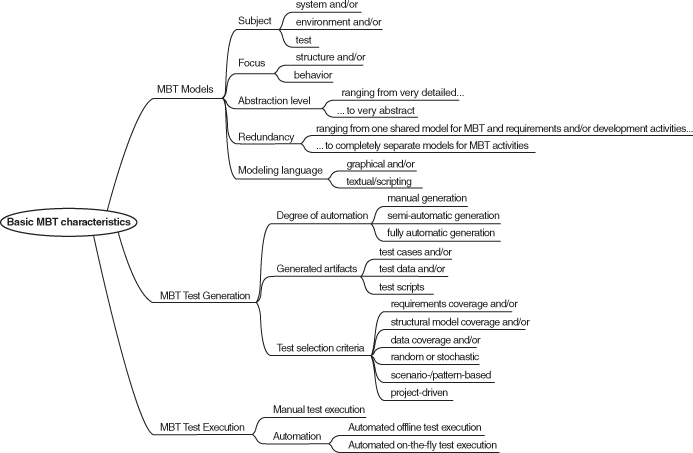C
TAXONOMY OF MBT APPROACHES
Several model-based testing (MBT) taxonomies exist in literature (see, e.g., Refs. [39 41]), which are more or less exhaustive. The problem lies in the diversity itself. On one hand, a complete taxonomy is necessarily rather complex and difficult to use. On the other hand, a simplified taxonomy excludes parts of the MBT approaches and, thus, cannot be universal.
In this book, we followed a simpler, more down-to-earth classification scheme, leaving out academic approaches not yet established in industrial projects. Figure C.1 shows an overview of the basic MBT characteristics. You can consider it as the table of contents of the ISTQB MBT syllabus for Chapters 2–4 and, thus, of the corresponding chapters in this book.

Figure C.1 Taxonomy of basic MBT characteristics.
Some characteristics exclude each other, while others do not. The latter are marked with “and/or.” For example, the dimension “Subject” spans a three-dimensional space. Each MBT model describes at least one of those subjects, but may also mix these subjects. The text “ranging from…to” indicates a continuous scale. Each MBT model is located somewhere between “very detailed” and “very abstract.”
Table C 1 provides a mapping between the different categories of the classification scheme and the corresponding sections in this book, in which the content is covered.
Table C.1 Mapping Between ...
Get Model-Based Testing Essentials - Guide to the ISTQB Certified Model-Based Tester now with the O’Reilly learning platform.
O’Reilly members experience books, live events, courses curated by job role, and more from O’Reilly and nearly 200 top publishers.

